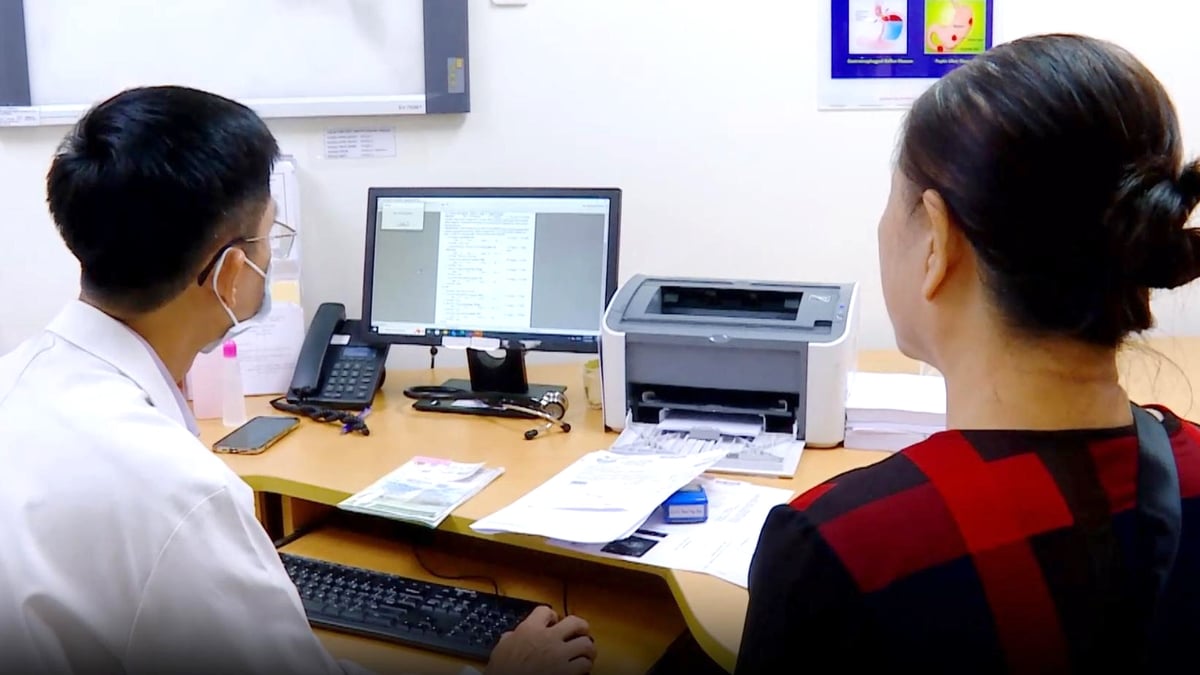From 2025, according to Decision No. 316/QD-TTg, all medical examination and treatment facilities nationwide will connect test results, helping patients save costs and time, while improving the effectiveness of medical examination and treatment. This is an important step in the digital transformation of healthcare , contributing to reducing costs by up to hundreds of billions of VND each year.
Save hundreds of billions of dong thanks to connecting results
According to the Ministry of Health , if the number of duplicate tests is reduced by just 1%, about 4.75 million tests will not need to be repeated each year. With an average price of about 50,000 VND per test, hospitals recognizing each other's test results will save more than 237 billion VND per year.
 |
| Currently, only about 10% of laboratories are standardized, which is a major barrier to connecting results. |
Mr. Tran Van M. (70 years old, Quang Ninh ) had a gastroscopy at Quang Ninh General Hospital and was diagnosed with antral gastritis and grade 1 gastric reflux. When he went to Viet Duc Hospital for a specialized examination, he only needed to open the app on his phone to provide the results of the endoscopy and biopsy performed at the lower-level hospital, without having to repeat the test.
Similarly, Ms. Pham Thi Nh. (60 years old, Vinh Phuc) went to E Hospital for a bone and joint examination and was able to reuse the blood test and X-ray results from a lower-level hospital, saving a significant amount of money.
Associate Professor, Dr. Dao Xuan Co, Director of Bach Mai Hospital, said that the hospital receives and uses test and imaging results from lower-level or higher-level hospitals as long as they are within clinical validity and in accordance with professional requirements. This helps save costs for patients and provides professional support between hospitals.
However, the connection of test results has not been implemented synchronously at all medical facilities. Mr. Tran Sy Hoa (Quang Ninh) shared that although he had an X-ray taken at Quang Ninh General Hospital, when he transferred to another hospital in the province or to the central level, he still had to take the X-ray many times, which was costly and time-consuming.
Dr. Nguyen Ngo Quang, Director of the Department of Science, Technology and Training (Ministry of Health) said that since 2018, the connection of test results between special and first-class hospitals has begun. In 2020, the connection will be expanded within the same province or city, and by 2025, the connection will be implemented nationwide. However, currently only about 10% of laboratories are standardized, which is a major barrier to the connection of results.
Promoting digital transformation to perfect connectivity
To facilitate the connection of test results between hospitals, the Ministry of Health will accelerate the standardization of laboratories in the coming time. At the same time, the connection of medical data will also be more convenient when 100% of medical facilities synchronize electronic medical records.
According to the Ministry of Health, only two localities have completed the implementation of electronic medical records at 100% of public hospitals, namely Phu Tho and Bac Ninh. Many other localities such as Thai Nguyen, Hanoi, Thanh Hoa, Quang Ninh, and Nghe An have developed detailed plans to complete the implementation before September 30, 2025, according to the Prime Minister's directive.
To date, there are 165 medical facilities nationwide that use electronic medical records, not paper medical records. Of these, Quang Ninh leads with 22 facilities, followed by Hanoi with 21 facilities, Phu Tho with 19 facilities, Ho Chi Minh City and Nghe An with 13 facilities. However, there are still 33 localities where no medical facilities have implemented electronic medical records.
Mr. Nguyen Ngo Quang added that the main difficulties in implementing electronic medical records are due to the complicated digital transformation process at each unit; the legal corridor for investment and hiring of information technology applications is not complete; the financial mechanism is not adequate; in addition, the shortage and weakness of information technology human resources are also major obstacles.
Speaking more about this, Dr. Ha Anh Duc, Director of the Department of Medical Examination and Treatment Management, Ministry of Health, emphasized that electronic medical records not only help save costs for patients but also improve professional efficiency, because doctors can easily access the patient's medical examination and treatment history for accurate and personalized treatment.
In addition, Big Data and artificial intelligence (AI) will be applied in diagnosis, forecasting and building personalized treatment regimens, opening a new era for smart medicine.
According to Associate Professor, Dr. Pham Quy Tuong, Chairman of the Vietnam Medical Informatics Association, investing in an electronic medical record system still faces many difficulties due to limitations in finance, technology infrastructure and human resources. Financially autonomous hospitals really need support mechanisms from the State to effectively implement digital transformation.
Deputy Minister of Health, Prof. Dr. Tran Van Thuan admitted that despite many difficulties such as overloading of upper-level hospitals and lack of medical staff in remote areas, the Ministry of Health is promoting administrative innovation and applying digital technology to build a modern, effective and equitable health system.
Source: https://baodautu.vn/nhieu-thach-thuc-khi-lien-thong-ket-qua-xet-nghiem-toan-quoc-d299263.html
























































![[Maritime News] Container shipping faces overcapacity that will last until 2028](https://vphoto.vietnam.vn/thumb/402x226/vietnam/resource/IMAGE/2025/7/30/6d35cbc6b0f643fd97f8aa2e9bc87aea)












































Comment (0)